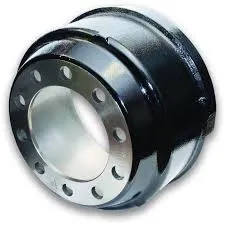
-
 Afrikaans
Afrikaans -
 Albanian
Albanian -
 Amharic
Amharic -
 Arabic
Arabic -
 Armenian
Armenian -
 Azerbaijani
Azerbaijani -
 Basque
Basque -
 Belarusian
Belarusian -
 Bengali
Bengali -
 Bosnian
Bosnian -
 Bulgarian
Bulgarian -
 Catalan
Catalan -
 Cebuano
Cebuano -
 Corsican
Corsican -
 Croatian
Croatian -
 Czech
Czech -
 Danish
Danish -
 Dutch
Dutch -
 English
English -
 Esperanto
Esperanto -
 Estonian
Estonian -
 Finnish
Finnish -
 French
French -
 Frisian
Frisian -
 Galician
Galician -
 Georgian
Georgian -
 German
German -
 Greek
Greek -
 Gujarati
Gujarati -
 Haitian Creole
Haitian Creole -
 hausa
hausa -
 hawaiian
hawaiian -
 Hebrew
Hebrew -
 Hindi
Hindi -
 Miao
Miao -
 Hungarian
Hungarian -
 Icelandic
Icelandic -
 igbo
igbo -
 Indonesian
Indonesian -
 irish
irish -
 Italian
Italian -
 Japanese
Japanese -
 Javanese
Javanese -
 Kannada
Kannada -
 kazakh
kazakh -
 Khmer
Khmer -
 Rwandese
Rwandese -
 Korean
Korean -
 Kurdish
Kurdish -
 Kyrgyz
Kyrgyz -
 Lao
Lao -
 Latin
Latin -
 Latvian
Latvian -
 Lithuanian
Lithuanian -
 Luxembourgish
Luxembourgish -
 Macedonian
Macedonian -
 Malgashi
Malgashi -
 Malay
Malay -
 Malayalam
Malayalam -
 Maltese
Maltese -
 Maori
Maori -
 Marathi
Marathi -
 Mongolian
Mongolian -
 Myanmar
Myanmar -
 Nepali
Nepali -
 Norwegian
Norwegian -
 Norwegian
Norwegian -
 Occitan
Occitan -
 Pashto
Pashto -
 Persian
Persian -
 Polish
Polish -
 Portuguese
Portuguese -
 Punjabi
Punjabi -
 Romanian
Romanian -
 Russian
Russian -
 Samoan
Samoan -
 Scottish Gaelic
Scottish Gaelic -
 Serbian
Serbian -
 Sesotho
Sesotho -
 Shona
Shona -
 Sindhi
Sindhi -
 Sinhala
Sinhala -
 Slovak
Slovak -
 Slovenian
Slovenian -
 Somali
Somali -
 Spanish
Spanish -
 Sundanese
Sundanese -
 Swahili
Swahili -
 Swedish
Swedish -
 Tagalog
Tagalog -
 Tajik
Tajik -
 Tamil
Tamil -
 Tatar
Tatar -
 Telugu
Telugu -
 Thai
Thai -
 Turkish
Turkish -
 Turkmen
Turkmen -
 Ukrainian
Ukrainian -
 Urdu
Urdu -
 Uighur
Uighur -
 Uzbek
Uzbek -
 Vietnamese
Vietnamese -
 Welsh
Welsh -
 Bantu
Bantu -
 Yiddish
Yiddish -
 Yoruba
Yoruba -
 Zulu
Zulu
do drum brakes use pads
Do Drum Brakes Use Pads?
When discussing automotive braking systems, most people are familiar with disc brakes and their use of brake pads. However, a common point of confusion arises when it comes to drum brakes. Do drum brakes use pads, or do they rely on a different mechanism entirely? In this article, we’ll delve into the structure and functioning of drum brakes, explaining why they don’t utilize pads like their disc counterparts.
Understanding Drum Brakes
Drum brakes consist of a few key components the brake drum, brake shoes, wheel cylinder, and various springs and levers. The brake drum is a cylindrical component that rotates with the wheel, while the brake shoes are curved, friction-producing elements housed within the drum. When the driver presses the brake pedal, hydraulic pressure from the master cylinder pushes the brake shoes outward against the inner surface of the rotating drum, thereby creating friction and slowing down the vehicle.
Brake Shoes Instead of Pads
Unlike disc brakes, which use flat brake pads that clamp onto a rotor, drum brakes employ brake shoes that are mounted on a pivot and push outward. The brake shoes are typically lined with a friction material—often made of organic, metallic, or ceramic compounds—that can withstand the heat generated during braking. This friction material serves a similar purpose to brake pads in that it provides the necessary grip to decelerate the vehicle.
do drum brakes use pads

Due to the enclosed nature of the drum, the design allows for effective braking action but also presents challenges such as heightened heat buildup and less efficient cooling compared to disc systems. This is one reason why drum brakes are more commonly found on the rear wheels of vehicles rather than the front, where the majority of braking force is needed.
Advantages and Disadvantages of Drum Brakes
Drum brakes have their own set of advantages. They are often lighter and more cost-effective to manufacture than disc brakes. Additionally, they can provide a strong braking force for smaller vehicles and in certain driving conditions, making them suitable for compact cars and older models.
However, the disadvantages are notable. Drum brakes can suffer from brake fade more quickly than disc brakes, especially in prolonged braking situations or touring. The enclosed design can trap moisture and dirt, leading to corrosion and reducing performance. This is part of the reason why many modern vehicles are equipped with disc brakes on all four wheels, enhancing braking performance and reliability.
Conclusion
In summary, drum brakes do not use pads but rather rely on brake shoes designed to make contact with the inside surface of a rotating drum. While they have some advantages, their limitations—particularly in performance and heat dissipation—have led manufacturers to increasingly favor disc brakes in new vehicle designs. Understanding the differences between these two braking systems can help vehicle owners make informed maintenance and upgrade decisions.
-
What Are Drum BrakesNewsJul.07,2025
-
Understanding Brake Drum MaterialNewsJul.07,2025
-
Semi-Trailer Brake Drum: A Key Component for Extreme Loads and Long-Distance TransportNewsJul.07,2025
-
Drum Brake Pads for SaleNewsJul.07,2025
-
Brake Drums for SaleNewsJul.07,2025
-
Brake Drum ManufacturerNewsJul.07,2025
-
Aluminum Brake Drums: The Future of High-Performance CarsNewsJul.07,2025
